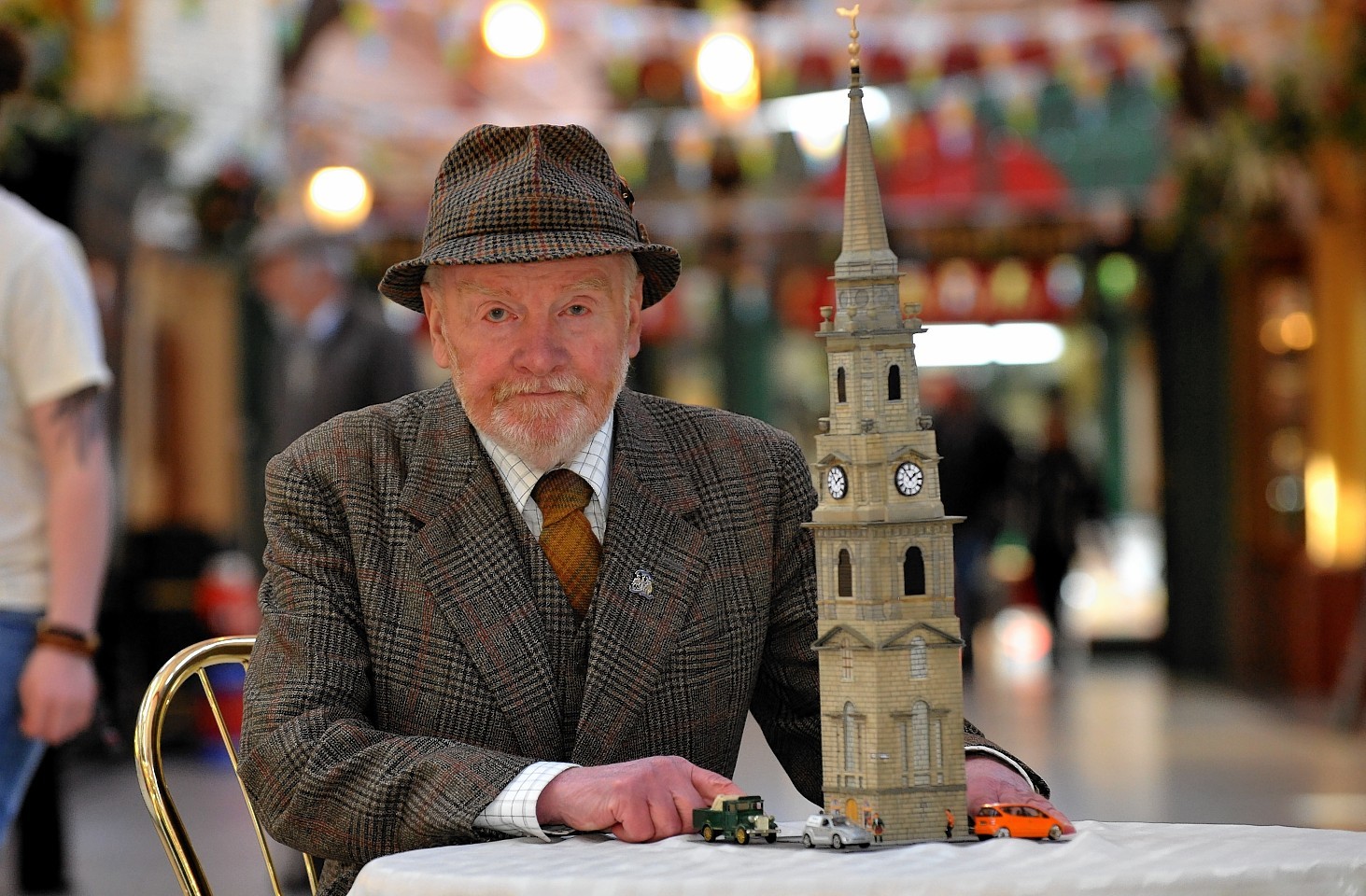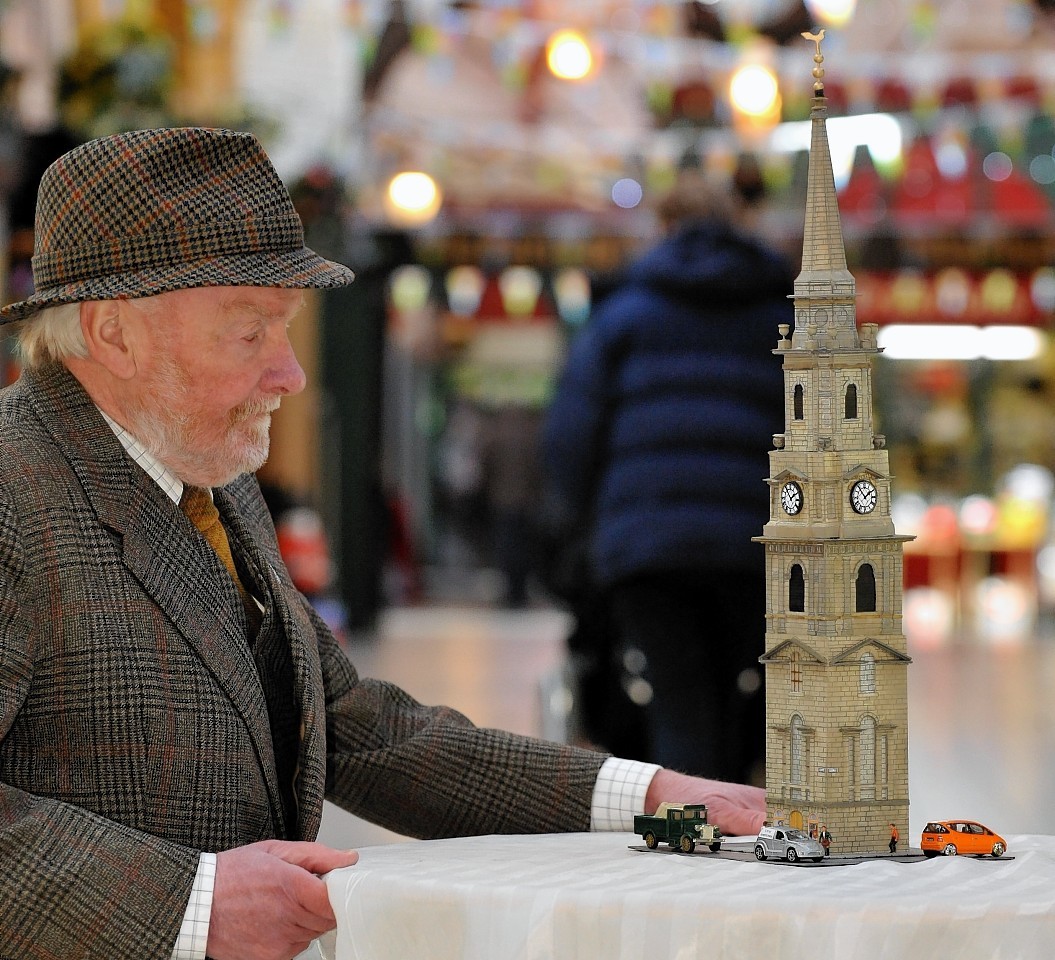Inverness Steeple may be partially hidden by scaffolding at the moment – but the building can still be seen in all its glory thanks to the efforts of a city historian.
Hector MacDonald has built a miniature replica of the distinctive city centre building, and put it on show for visitors to admire.
It’s part of his mission to model a number of the Highland capital’s most famous buildings, having already completed Inverness Castle and the ornate Academy Street entrance to the Victorian Market.
The 76-year-old former city councillor started work on the hand-painted Steeple model in 2013, and now the completed model has been placed on public display in the Hector Russell kilt shop next door to the Steeple.
Mr Russell’s model shows Bridge Street as it currently is – while around the corner on Church Street shows the area as it used to be with a number of features which are no longer there, such as the Volunteer Arms Hotel.
The former council offices next door to the Steeple in Church is currently covered in scaffolding as part of a major refurbishment and repair project by Highland Council, so the unveiling of the model is particularly timely.
Mr MacDonald said: “The Steeple was done some time ago and now I’ve added on the shops on either side.
“I’ve got the Bridge Street side as it is now with the Gellions pub and Hector Russells, and then the Church Street side has the older frontage.
“I’ve put some model cars in to make it clear, with newer ones on one side and older models on Church Street.”
Mr MacDonald built the model using cardboard and wooden struts and it is weighted at the bottom to help balance the structure.
It was built from the original ground plans of the building and from photographs of it from several different angles.
The Steeple is more than 200 years old and was designed by Andrew Laing.
The steeple is all that remains of the burgh buildings, built in 1791, which comprised a court, jail and the 130ft spire.
It cost £1,497 to build.
Mr MacDonald is now set to start work on modelling either Abertarff House or the foundry building as part of his efforts to model the city centre.

